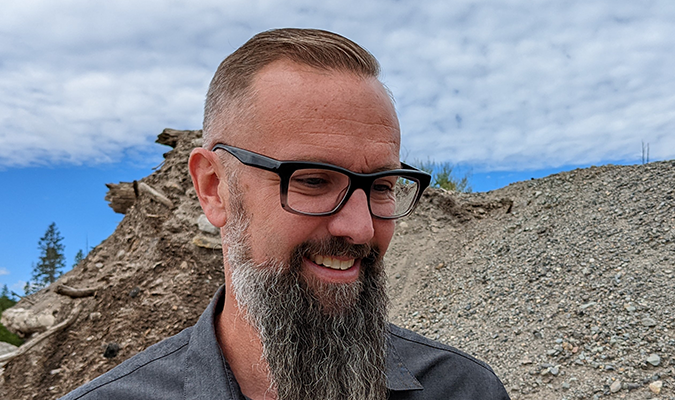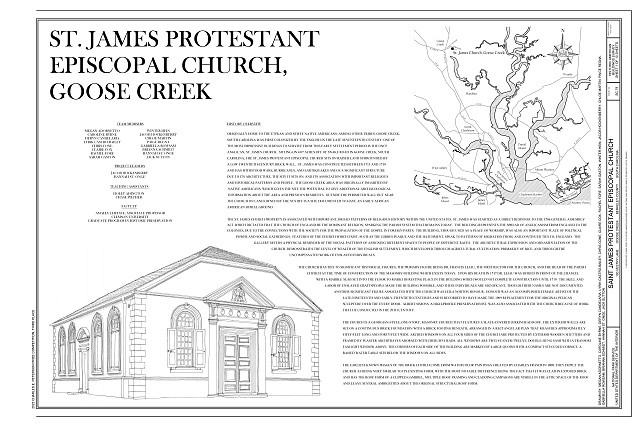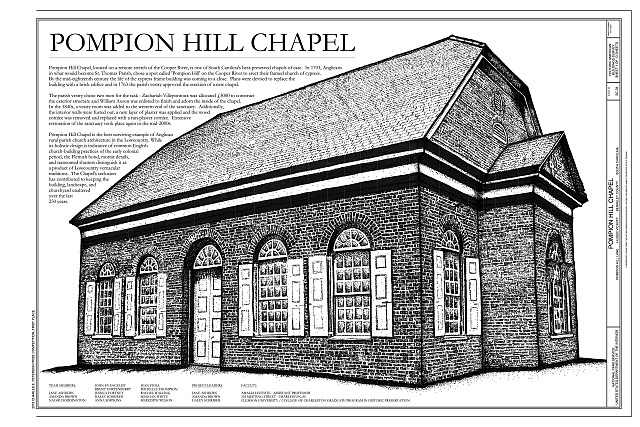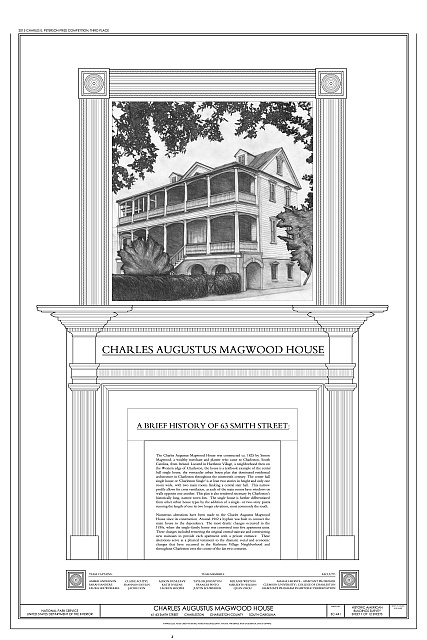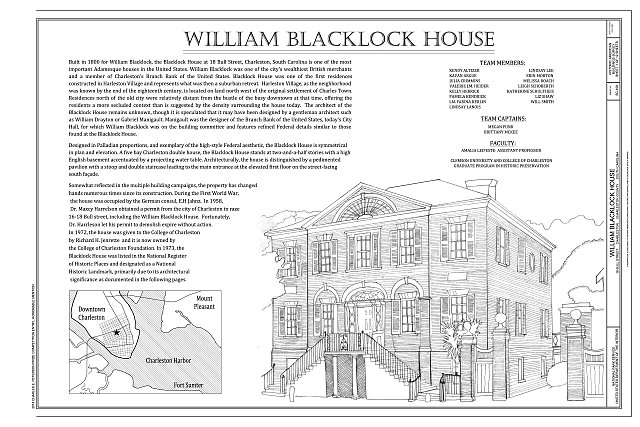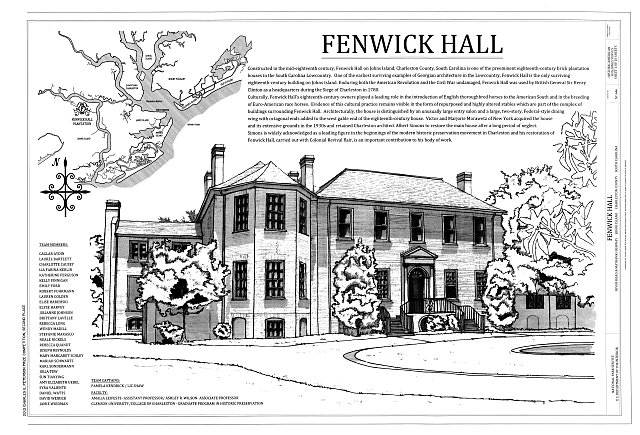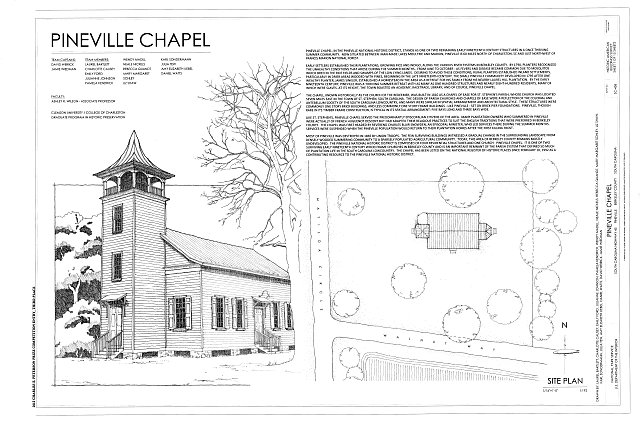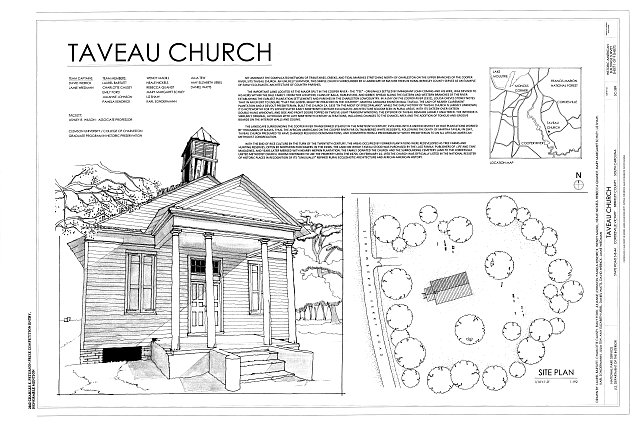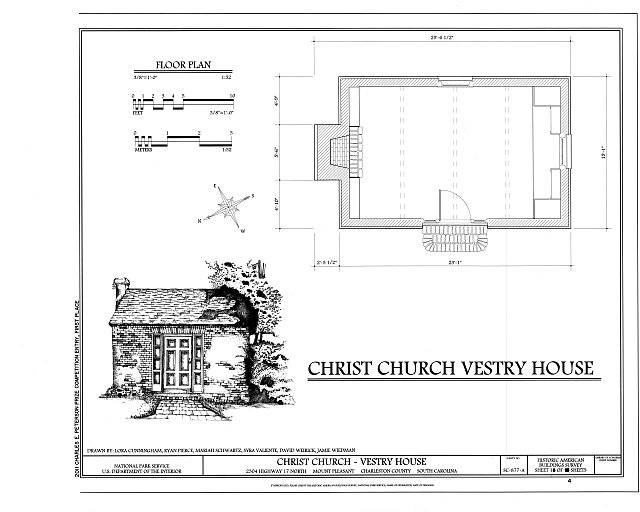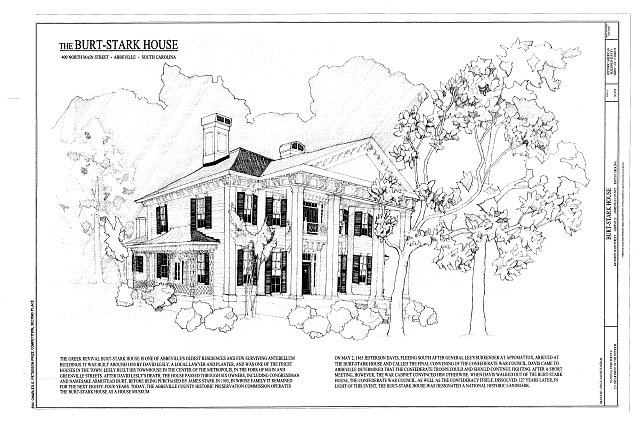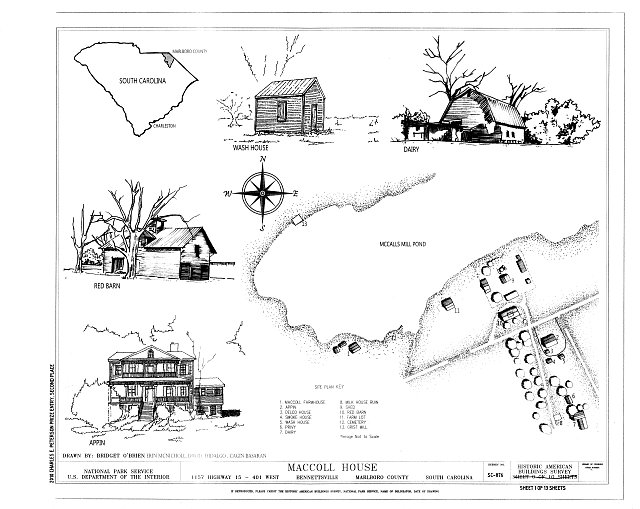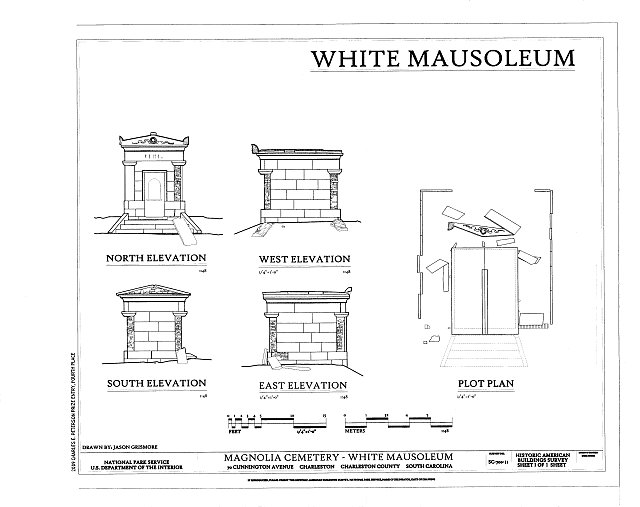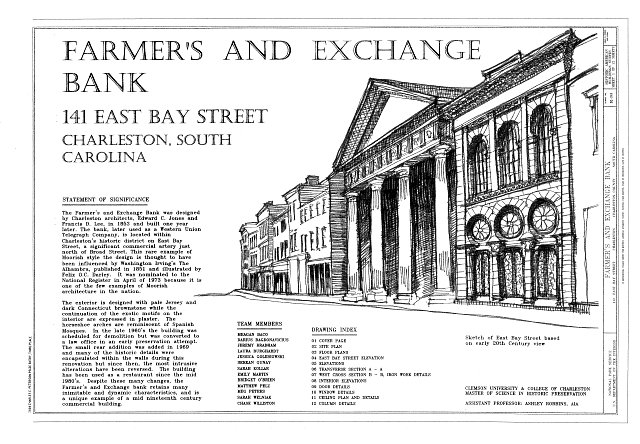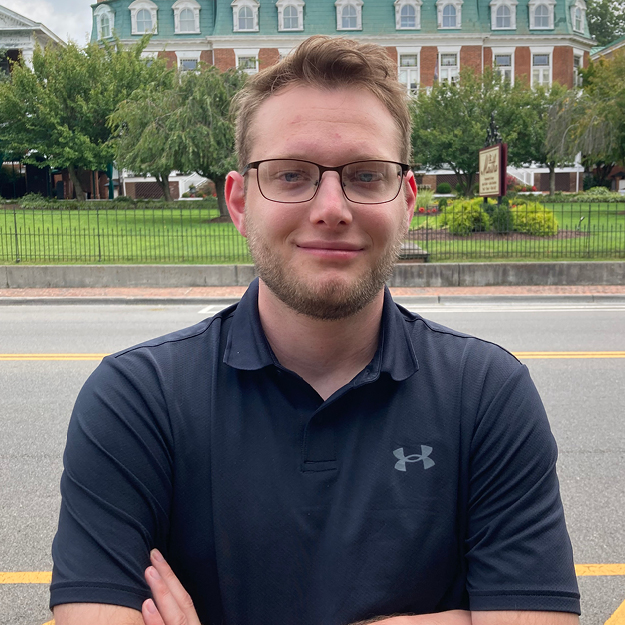Historic Preservation in Charleston, S.C.
Our program, conducted in Charleston, South Carolina, offers a two-year course of study that leads to the Master of Science in Historic Preservation degree. Historic preservation is a field that studies, interprets and protects the past as it is materialized in buildings and landscapes. In our unique program, we teach our students to preserve both the fabric of historic buildings and landscapes and the stories that give those places meaning. Our curriculum is built around hands-on learning. Our students learn preservation by doing preservation with Charleston’s foremost experts in architectural conservation, architectural history, landscape preservation, and urban/preservation planning while collaborating with the individuals and organizations that steward important historic places. Through real-world projects, we train students in the most cutting-edge preservation technology and techniques, including Geographic Information Systems (GIS), digital photogrammetry, 3D laser scanning, ground penetrating radar, architectural and object conservation and mortar and paint analysis. We are one of a very few programs that have an active conservation laboratory at the center of the curriculum. We apply our skills all over the city of Charleston and regionally and think of Charleston as our living laboratory. This unique home, with its amazing time-depth of historic resources, history of pioneering preservation tools and ideas and model for current preservation challenges, provides incredible opportunities to explore, first-hand, world-class architecture, museums and history spanning four centuries.
Apply
Newsletter
Historic Preservation Theses
Alumni Careers
Program Information
Upcoming Open House Events
- September 19, 2025
- October 10, 2025 (Zoom Only)
- October 27, 2025
- November 21, 2025 (Zoom Only)
- January 16, 2026
- April 3, 2026 — Accepted Students Day
Register for an open house session: https://forms.office.com/r/PG0pn62nEL
-
Areas of Emphasis
The curriculum offers students experience in all these major aspects of preservation practice:
Areas of emphasis include:
- Architectural History and Cultural Significance
- Documentation and Interpretation of Landscapes, Buildings, Interiors, and Objects
- Historic Building Materials, Techniques, and Treatments
- Contextual Design and Planning
- Conservation Science and Material Analysis
- Preservation Policy and Cultural Resource Management
- Sustainability and the Economics of Rehabilitation
The program’s experiential curriculum is carried out through community-based preservation projects. Program faculty and students collaborate with a diverse collection of community partners, including federal agencies like the National Park Service and the Gullah Geechee Cultural Heritage Corridor Commission, state and county agencies like the South Carolina Department of Parks, Recreation & Tourism and Charleston County Parks and Recreation, the City of Charleston, preservation advocacy groups such as the National Trust for Historic Preservation, Historic Charleston Foundation, Preservation Society of Charleston, and the Lowcountry Land Trust, and community heritage groups like the Progressive Club, Seashore Farmers Lodge, and the South Carolina Society.
-
Curriculum
The 60-credit MSHP curriculum is conducted in a ‘cohort’ model, meaning all MSHP students begin together in the Fall semester, and learn through their two years in the program with a close-knit group of colleagues.
Master of Science in Historic Preservation Curriculum (60 credit hours required)
Semester I
Foundational preservation knowledge and skill acquisition: A semester of "core" curriculum in historic preservation that revolves around developing a deeper understanding of historic architectural fabric through a connected series of courses. 15 credits.
- HP 8080 History and Theory of Historic Preservation (3cr)
- HP 8070 American Architecture (3cr)
- HP 8090 Historical Research Methods (3cr)
- HP 8190 Investigation, Documentation and Conservation (6cr)
Semester II
Advanced preservation knowledge and skill acquisition: An "advanced" semester that focuses on acquiring skills in digital recording, pursuing a preservation project through a studio, investigating and analyzing cultural landscapes and broader assemblages of historic resources as well as a conservation laboratory science class. 15 credits
- HP 8050 Preservation Studio (6cr)
- HP 8330 Cultural & Historical Landscape Preservation (3cr)
- HP 8100 Conservation Laboratory Science (6cr)
Summer (Historic Preservation Internship)
During the summer between the first and second years, students complete an intensive internship with professional historic preservation practitioners. In addition to gaining valuable hands-on experience and career networking, the internship allows students to gain a first-hand perspective on the professional practice of preservation. Students secure internships at a wide range of organizations, including the Historic American Building Survey (HABS), the International Committee on Monuments and Sites (ICOMOS), the National Trust, and local museums and foundations as well as preservation practitioners in America and Europe. 3 credits.
- HP 8450 Historic Preservation Internship (3cr)
Semester III
Implementation/Intervention: A semester focusing on modern building systems and materials, the legal and economic contexts of historic preservation, and on project-based work developing, and implementing preservation interventions. At this point in the curriculum, students begin their theses. 15 credits.
- HP 8030 Building Technology and Pathology (3cr)
- HP 8020 Historic Preservation Research Seminar (3cr)
- HP 8010 Preservation Law and Economics (3cr)
- Approved Elective (3cr)*
- Approved Elective (3cr)*
Semester IV
Capstone: A final semester during which the focus is on completion of the thesis with additional opportunities to pursue elective courses related to career goals. 12 credits.
- HP 8910 Thesis in Historic Preservation (6cr)
- Approved Elective (3cr)*
- Approved Elective (3cr)*
*Approved Elective Courses
- HP 8040 Management and Administration of Historic Preservation (3cr)
- HP 8110 Advanced Conservation Science Laboratory (3cr)
- HP 8210 Historic Preservation and Public Memory (3cr)
- HP 8220 Vernacular Places and Spaces (3cr)
- HP 8230 Historic American Interiors (3cr)
- HP 8250 Sustainability and Historic Preservation (3cr)
- HP 8260 Historic Structures Report (3cr)
- HP 8270 Adaptive Use (3cr)
- HP 8280 Case Studies in Preservation Engineering (3cr)
- HP 8290 Digital Tools for Historic Preservation (3cr)
- HP 8920 Special Topics in Historic Preservation (3cr)
- HP 8930 Independent Study in Historic Preservation (3cr)
-
Application Information
Priority application deadline is February 15; applicants who meet this priority deadline will also be considered for merit aid.
Application Requirements:
- Personal Statement
- Two letters of recommendation
- Unofficial transcripts
- Writing Sample (Undergraduate research thesis accepted; writing sample should showcase your writing mechanics, including your ability to use and credit sources correctly and your analytical thinking)
- Optional: Portfolio
- GRE is not required
Contact preservation@clemson.edu if you have questions about the application process.
Submit your application today! -
Engaged Community Projects
Preserving Black History: Field school documents historic structures
Historic Preservation field school engages Gullah Geechee community
Johns Island Community Field School: Documenting the Built Environment of a Gullah Geechee Community
The field school has a website with detailed information available here.
In the summer of 2023 and 2024 twenty multi-generational, fantastic, field school ‘students’ studied the history of four important places on Johns Island: Moving Star Hall (ca. 1917), one of the few remaining examples of Praise Houses left in the Lowcountry; the Progressive Club (1963), which served as the site for a Civil-Rights period Citizenship School and community center; Hebron Presbyterian Church (1865), built by the local African-American community at the end of the Civil War; and Promise Land Elementary School, where prominent Civil Rights figure Septima Clark taught Esau Jenkins during Jim Crow.
Critical to its success, the field school includes community members as key educators to address the local history of the Johns Island community and the evolution of the local cultural and historic landscape.
Recognizing that historic preservation and public history have often failed to invest in the recruitment and preparation of first-generation students and/or ethno-racially diverse scholars and practitioners, our field school offers stipends and zero-cost tuition to make the experience more financially accessible, and our team strives to employ culturally-responsive pedagogical approaches. “This project is supported by a generous grant from the Vernacular Architecture Forum and the Andrew W. Mellon Foundation.”
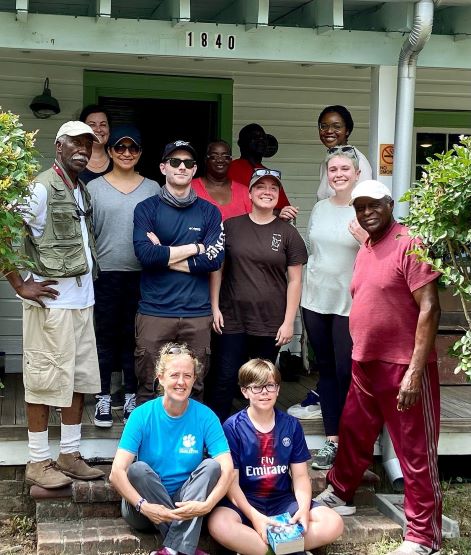
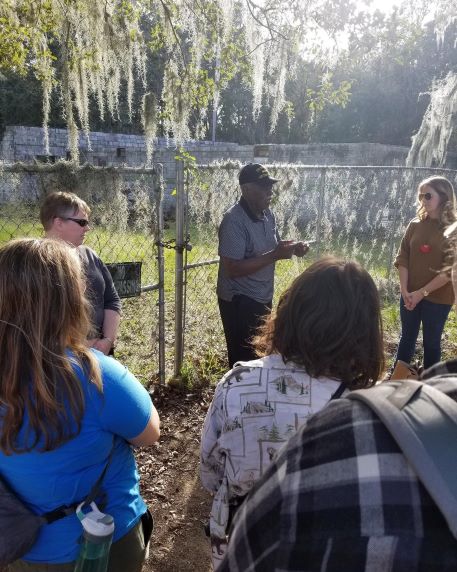
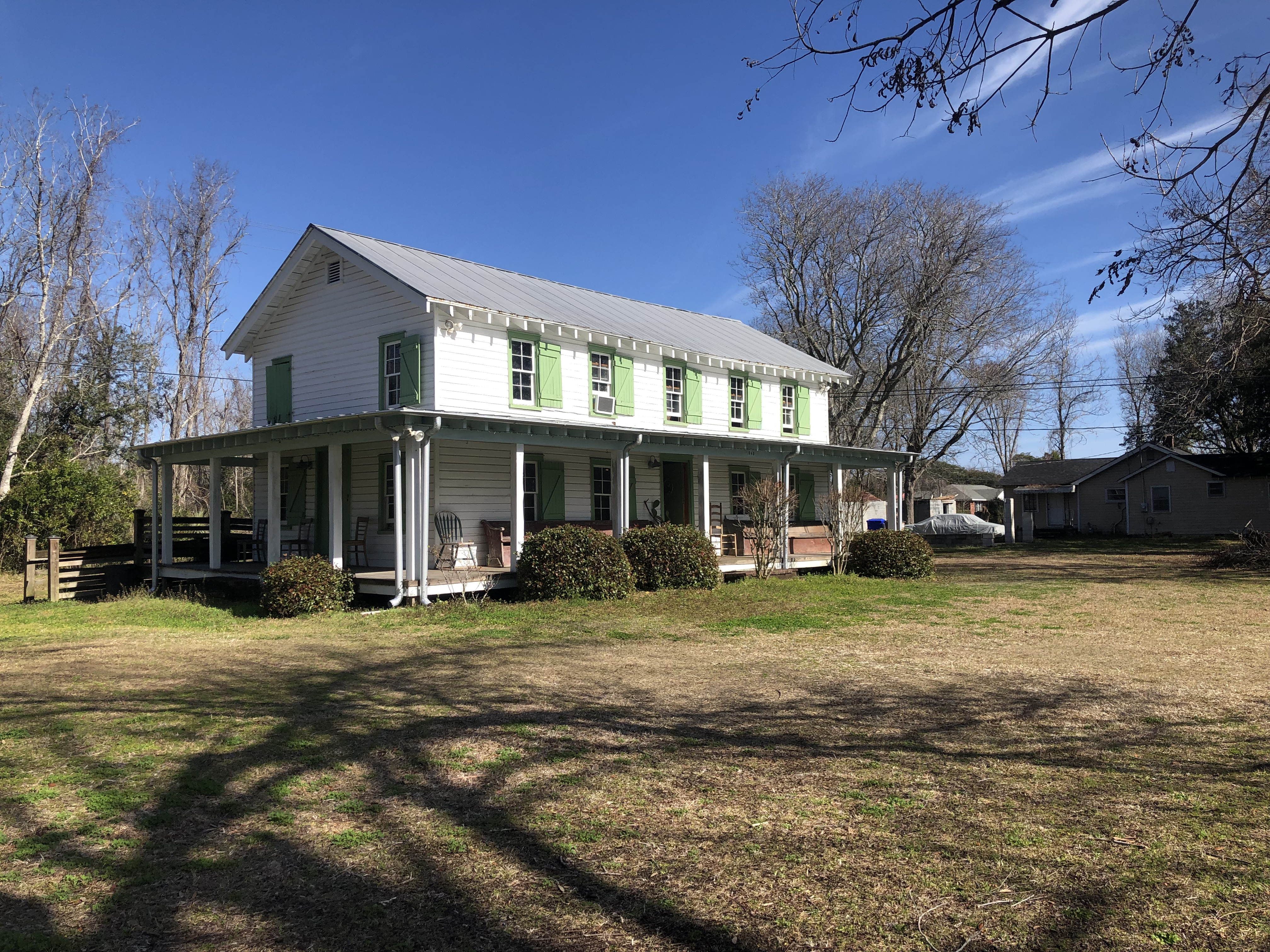
Black Heritage Resilience Through Community-Based Collections Restoration and Management at the Seashore Farmers’ Lodge Museum and Cultural Center
Built by members of the Seashore Farmers Lodge fraternal organization ca. 1915, the lodge building served local community members as focal place for religious services, educational programs, civic deliberations, and celebrations. As a museum, the building now houses a large collection of material culture associated with the history of the lodge and the Sol Legare community. Along with our partners at the Lodge and at Warren Lasch conservation center , we are providing collections management training for community members (compensation provided); conducting conservation assessment, and treatment for objects in the Seashore Farmers Lodge collection; and developing manuals for ongoing care and management. The idea is to create a program that the Lodge Staff will share with other communities who currently have object collections or wish to begin curating their own collections. This project is supported by a generous grant from the Gaylord and Dorothy Donnelley Foundation.
-
Awards
The program bestows two awards annually to graduating students: a best thesis award and the Kelly B. Bulak Award (previously the Ann Pamela Cunningham Award). For the outstanding thesis award our faculty are charged each year with selecting from among the group of scholarly works, an outstanding example of the thesis process and final manuscript. The Kelly B. Bulak Award is given annually to the graduating student who the faculty feels most embodies Kelly’s optimism, passion for historic buildings and landscapes, dedication to our field, and commitment to their classmates.
[PHOTO]
Outstanding Thesis Award:
2024: Rachel Fore- Tracking the “Soiled Doves”: a Cultural Landscape of Prostitution in Charleston, SC from 1880-1939
And
Chloe Martin- In Search of a Blind Tiger: a Cultural and Historic Landscape Analyais of Prohibition-Era Charleston.2023: Emma Grace Sprinkle- An Investigation of Community-Defined Boundaries and Important Sites
2022: Riley Morris- A Performance Evaluation of Architectural Coatings to Preserve Aerosol Paint on Concrete
2021: Bernard J. O'Brien- Re-evaluating Significance Through Embodied Energy: Quantifying Significance in Load Bearing Brick Masonry Buildings
2020: Rachel W. Wilson- This Is Not a Drill: A Survey of Natural Disaster Preparedness in House Museums and Historic Sites
2019: Sada Stewart - Plantations, Planning & Patterns: An Analysis of Landscapes of Surveillance on Rice Plantations in the Ace Basin, SC, 1800-1867
2018: Lauren Lindsey - Fostering Community: Spatial Arrangements of Early Nineteenth Century Camp Meeting Grounds in South Carolina.
2017: Benjamin Walker - Importing the Vernacular: An Analysis of the Panama Houses of the Former Charleston Navy Yard as an Adapted Regional Building Typology
2016: Amanda Brown - City-Scaled Digital Documentation: A Comparative Analysis of Digital Documentation Technologies for Recording Architectural Heritage
2015: Amber Anderson - The Analysis of a Secondary Space: Bathrooms at Frank Lloyd Wright's Fallingwater
2014: Lindsay Lanois - The LeConte Lodge: A Lens for the Evolution and Development of the Great Smoky Mountains National Park
2013: Julianne Johnson - The Financial Impact of Historic Preservation Easements on Encumbered Property Appreciation Rates in Charleston, South Carolina
2012: Jamie Weidman - Ties That Bind: The Emergence of Iron Tie Rod Reinforcement in Load Bearing Masonry Buildings of Charleston, South Carolina
2011: Christine Mathieson - Ambition's Apex: The Private Art Gallery of the Aiken-Rhett House
2009: Jeremy Bradham - The Documentation of Lawson's Pond Plantation and the Craftsmanship Employed in Upper St. John's Parish, Berkeley County, South Carolina
[Photo]
Kelly B. Bulak Award:
2024 - Hannah St. Onge
2023 - Emma Grace Sprinkle
2022 - Patricia Ploehn
2021 - Lisa Gardiner
2020 - Elliott Simon
2019 - Rucha Ravindra Kamath
2018 - Sam Bigger
2017 - Alena Franco
2016 - Haley Schriber
2015 - Laura Lee Worrell
Outside groups have also honored our student work with multiple prestigious awards. The program’s longstanding commitment to recording historic places through measured drawing has been recognized with many Peterson Prize awards over the approximately 20 years of the program’s history.
-
Facilities and Resources
The Graduate Program in Historic Preservation and its students draw on a wide range of resources during their two-year course of study. One of the program’s most significant assets is its location in Charleston, arguably the nation’s best-preserved city and the birthplace of many of historic preservation’s most effective tools.
The program’s studios as well as its architectural conservation and microscopy laboratories are housed at the new Clemson Design Center located within The Cigar Factory. The microscopy lab is equipped with digital imaging instruments including a CRAIC photospectrometer. As students of both Clemson University and the College of Charleston, MSHP students have access to all the laboratories and facilities both schools manage, from the Brick Institute at Clemson to the Avery Research Center at the College of Charleston to the Warren Lasch Conservation Center where MSHP students use XRF, XRD and SEM technology to assess the properties and degradation of historic building materials.
On-site Materials Conservation Lab (Charleston, SC) An architectural conservation lab is available for students' easy access in the program's main building. The lab is equipped to help students better understand building materials and conservation of those materials through, research, examination, testing and treatment. A Nikon Eclipse 80i microscope in the microscopy lab helps students examine materials from mortar, finishes and wood testing. A full complement of essential lab equipment is available for students use in the conservation lab.
Lab experiments include:
- Mortar analysis/gravimetric and acid digestion of mortar and stucco samples
- Surface water permeability/capillary action
- Wood maceration/identification
- Wood swelling and shrinking
- Stone repair treatments
- Metal identification
- Paint/finishes analysis
The Warren Lasch Conservation Lab is located on the North Charleston campus of the Restoration Institute.The goal of the Warren Lasch Conservation Lab is to advance the science of metal artifact conservation. The lab is equipped with an x-ray imaging system, XRF spectrum analyzers, remote video devices, precision excavation tools, and various electrical and chemical testing equipment.
-
Historic Preservation Organizations
The state of South Carolina has a rich heritage that is preserved, interpreted, and sustained by wide variety of non-profit and governmental organizations. The list below represents but a few of these organizations:
Charleston, SC area based
- Richard Hampton Jenerette Foundation
- Preservation Society of Charleston
- Historic Charleston Foundation
- Drayton Hall
- Lincolnville Preservation & Historical Society
South Carolina
“Senior Planner/GIS Specialist for the Town of Abingdon, VA. The Town of Abingdon, VA is a historic town in southwest Virginia and is generally considered the best-preserved historic locality in the region with many structures and sites dating as far back as the 1700’s. As the Senior Planner/GIS Specialist it is my responsibility to ensure property owners and developers adhere to the Town of Abingdon’s zoning codes and historic design review guidelines. As the lead historic preservation staff member, I head many exciting preservation projects. Currently I am in the process of expanding Abingdon’s Old & Historic District to eligible areas of the town. Recently we were awarded two separate grants through Virginia’s Department of Historic Resources (DHR) Certified Local Government (CLG) Program. These two grants will fund Abingdon’s 2nd Annual Historic Preservation Day, a conference event I coordinate to further educate the public on the theory and technical aspects of preservation. The second grant is for a preservation plan for Sinking Spring Cemetery, a 250-year-old cemetery. Other projects in development include a ground penetrating radar (GPR) survey for the believed African American portion of Sinking Spring Cemetery, a restoration project for a circa 1808 building known as Retirement located at Abingdon’s Muster Grounds and revising the historic preservation review guidelines for the Town of Abingdon, VA.”
Gabriel CristofariSenior Planner/GIS SpecialistTown of Abingdon, VA
Contact
Bradford Watson
Director of Graduate Programs in Historic Preservation
Email: bawatso@clemson.edu |Phone: 843-953-0504
About Bradford Watson